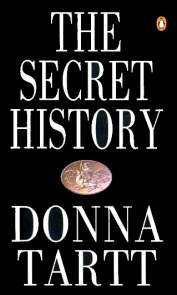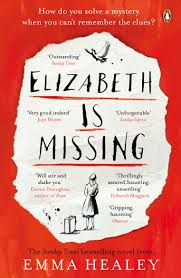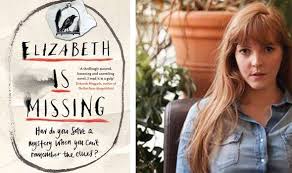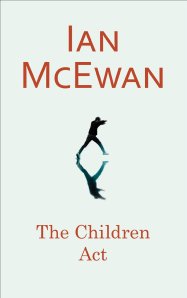The Winter War, Philip Teir, Serpents Tail 2013
February 1, 2016 at 9:43 pm | Posted in Freedom, Middle Weight Fiction, Popular Fiction, The Winter War | Leave a commentThis debut novel has been compared with Jonathan Franzen’s magnificent ‘Freedom’ but this parallel pays no compliment to either book. The scope and style of ‘Freedom’ is imagined with much more daring and detail than ‘The Winter War’ but as I say the comparison is redundant. The ‘Winter War’ in it’s own style is evocative and thoughtful but is also identifi able as a debut novel. The story chronicles the demise of an upper middle class marriage against the backdrop of a hard Helsinki winter.
able as a debut novel. The story chronicles the demise of an upper middle class marriage against the backdrop of a hard Helsinki winter.
The Winter War of 1939-1940 was fought between Finland and the Soviet Union and took the same length of time to be over as did the marriage of the two main characters of ‘The Winter War’ Max and Katriina.
The prose is gentle and subtle an ebbing and flowing of the mind of Max of his going back and forth between decisions in an undefined search. The secondary story of Max and Katriina’s daughter moving to London to pursue an education in fine Art and assert her bohemian side is an interesting but disconnected piece.
This novel treats you to the experience of an unforgiving Helsinki winter and the unforgiving implosion of a marriage neglected and fermented. To paint such pictures is a tribute to the new author whose next novel I’ll be sure to read also. As we all are, this novel is perfect in it’s own imperfections.
The book in haiku: Helsinki snowstorm, falling silently at night, too heavy to dig
McEwan reigns
November 11, 2014 at 10:24 pm | Posted in Great for Book Clubs, Middle Weight Fiction, The Children Act | 2 CommentsTags: Book Clubs, book review, good book reviews, Great Reads, new fiction, recomended reads
Ian McEwan ‘The Children Act’, Jonathan Cape 2014
Ian McEwan is a master storyteller. In his latest novel he brings us on a journey into the moment of a life of a very successful high court judge, Fiona and the personal and legal challenges she simultaneously faces.
McEwan employs his impressive skills of engineering a plot and grinding the wheels of prose to tenderly lament a marriage in peril after thirty years and to bring us on the journey of Fiona’s greatest professional challenge – the case of a seventeen year old Jehovah’s Witness boy who is refusing a lifesaving blood transfusion on the grounds of his religion.
To compare this novel to ‘Solar’ or ‘Saturday’ would be an easy thing to do but not appropriate, for this novel relays something that has provoked McEwan’s sensibilities and interest and perhaps it is this suspect personal feel that distinguishes this novel from his others.
The Guardian, in their review of ‘The Children Act’ observed that McEwan is fascinated with ‘great institutionalized authorities’ in the upper echelons of society – his protagonist in ‘Saturday’ from the esteemed medical profession and in ‘Solar’ a research scientist. Now in ‘The Children Act’ a high court judge. His deluges into Fiona’s personal difficulties however feel more poignant and sit a little less easy than journeys with his previous characters whose theatrical personalities lend themselves to plots of great scope and pace.
What does McEwan feel about Fiona and her situations really? I’m not sure by the end of the novel but I know her view of the world and her vantage point from the legal profession captured his imagination and I felt glad to have been moved by some deeply beautiful prose;
‘It could be just like that, a poisonous obsession, an addiction drawing him away from home, bending him out of shape, consuming all they had of past and future, as well as present.
Either way unbearable.
Unbearable and fascinating. And irrelevant.’
The Children Act in haiku
Legal vantage points
Logic and closed emotions
Verdicts that flounder
The Secret History Donna Tartt
April 4, 2014 at 4:24 pm | Posted in Award winners, Middle Weight Fiction, Popular Fiction, The Secret History | 1 CommentTags: Book Clubs, book review, Book Reviews, bookclub, Bookreviews, good book reviews, Great Reads, popular fiction, recomended reads

It is understandable how Donna Tartt’s ‘The Secret History’ became a long-term bestseller and conquered a place in so many book lovers hearts. The story centered on a group of young bright affluent students at an exclusive Vermont College in the 1980’s roaming wild and burning through money is exceptionally engaging .and compulsively addictive.
The young group is composed of a variety of apparently sympathetic characters Richard who, unlike his peers, is on a scholarship to the exclusive college and is at great pains to conceal his blue-collar roots, twins Camilla and Charles known for their manners and gentle ways, Henry the emergent leader of the group remarkable for his adaptability to changes in circumstance and ability to mix easily with all sorts of people and also Francis and Bunny who enjoy all life has to offer with great self-assurance. What the characters all have in common is that they are all students of the charismatic erudite Professor Julian Morrow who teaches them Classics exclusively to a level of detail and reverence far above the academic norm.
Inspired deeply by their passionate teacher a few members of the group perform a Dionysian rite one night (a rite designed to work the worshiper into a state of ecstasy in order to feel the power of the gods through wine, dancing and often sexual expression) but the rite has truly gross consequences for the group which go on to drive the plot to even wilder and darker places and the death of Bunny Corcoran (whose death is revealed to the reader in the first line of the novel). 
Do not look for redemption, regret or guilty melancholy from this group, as a reader the novel demands that one must think much bigger when it comes to this motley crew and contemplate openly Donna Tartt’s brilliant subtle suggestions that Henry may himself be the devil incarnate and that in this existential world absolutely anything is possible once you have the nerve and stomach for it.
The plot is set in the familiar routines of college life against the rich dripping backdrop of the classical world of Greek and Latin language, prose and poetry. Donna Tartt’s prose is just so accomplished that at times it feels like God himself has lifted the telephone to call you personally and reveal some select mysteries of the world;
‘…there was never any doubt that he (Henry) did not wish to see us in our entirety, or see us, in fact, in anything other that the magnificent roles he had invented for us: genis gratus, corpore glabellus, arte multiscius, et fortuna opulentus – smooth cheeked, soft-skinned, well-educated, and rich. It was his odd blindness, I think, to all problems of a personal nature which made him able at the end to transmute even Bunny’s highly substantive troubles into spiritual ones.’
The novel in haiku; murderous thoughts fly, money and nerve conquer all, but it takes just one
‘The Woman Upstairs’ vs. ‘Instructions for a Heatwave’
November 10, 2013 at 2:59 pm | Posted in Great for Book Clubs, Instructions for a Heatwave, Middle Weight Fiction, The Woman Upstairs | 3 CommentsTags: Book Reviews, bookclub, good book reviews, new fiction
‘The Woman Upstairs’ vs. ‘Instructions for a Heatwave’
I love both Claire Messud and Maggie O’Farrell. They are both accomplished, polished storytellers and professionals of emotionally awakening prose. In 2006 Claire Messud’s ‘The Emperors Children’ moved me in a way no other piece of literature had. And in 2005 I sacrificed much sleep in reading Maggie O’Farrell’s ‘The Distance Between us’.
‘The Woman Upstairs’ deals with a very interesting and perhaps under-explored topic that of a woman’s disillusion with her place in the world and the crushing binds of familial duty.
Women are expected to be good and nice and ‘The Woman Upstairs’ shows this to be a perennial and generation busting expectation even in the 21st Century. But most importantly ‘The Woman Upstairs’ deals with the unapologetic and growing anger a woman feels when she finds the time to think broadly about her life in this context.
Messud’s leading heroine Nora Eldridge is mad as hell when we first meet her;
‘How angry am I? You don’t want to know.’
Nora desired to be a fine artist but was counseled by her parents to become a teacher instead and have a stable career. Familial circumstances then caused her to devote much time to taking care of her terminally ill mother and then her aging father to the detriment of her own life and dreams. These limits in her life caused her to develop feelings of self-doubt and cowardice that prevented her from living fully and without fear.
A new young pupil in Nora’s elementary school brings into her life an exotic and beautiful family of Lebanese origin. True scholars and artists they bring Nora into their glamorous life of culture and freedom. Nora at lasts tastes the life she has always dreamed of but quickly becomes precariously close with each member of the family as they become for her the family she never had.
The prose and plot is not perhaps as captivating as that of ‘The Emperors Children’ but this novel is just as important as it asks in every chapter questions about a woman’s place in the world, it questions the real and unrealistic expectations of a woman and looks at the importance of a woman’s relationship with herself.
Set in London during the heatwave of 1976 ‘Instructions for a Heatwave’ is a novel based around a family of five whose patriarch tells his wife he is popping out for a newspaper and never comes back.
This brings the three adult children back together to their family home as the search for the AWOL father gets underway. In close proximity to each other the children’s own problems and life situations leak out and brew all hot summer long. As we learn about the human problems each adult child faces the novel becomes a great depiction of a real family facing down difficult marriages, lost dreams, unplanned pregnancies and the worst parts of their personalities hotting up under the pressure of the heatwave.
The reader never assumes one member of the family could have a known explanation for the fathers leaving or that the intimacy of this secret could bring the family closer together. One of Maggie O’Farrell’s greatest traits as an author is to find intimacy in unusual places; in explosive secrets, in geographical distances or in different life choices and how they can help one to appreciate another. Set against the raging summer heat the secrets of the novel cook to boiling point and perhaps like a full moon the characters are unusually affected by the unrelenting high temperature of the summer of 1976.
Maggie O’Farrell’s novels love to suggest that families and marriages are not always as they seem and that secrets may often be at their best when revealed. This latest novel does just that and is a delicious and rapturous addition to her catalogue.
Haiku; The woman upstairs, finds herself in the heatwave, with no more secrets
Gone Girl Vs The One Hundred Year Old Man who Climed out the Window and Disappeared
September 1, 2013 at 1:18 pm | Posted in Middle Weight Fiction | 9 CommentsHaving read both these novels on a recent holiday I was moved to review these stories against each other because when compared one shows the other in a poor superficial light and the other, not only in comparison, is a truly beautiful and well crafted literary story.
Overwhelming consensus currently says ‘Gone Girl’ by Gillian Flynn is the literary thriller of the year which I disagree with with gusto! Gone Girl is neither literary nor thrilling. The story is based upon a married couple in the thirties who are beautiful, successful and in love. Their world is then rocked by the loss of both their jobs and a radial move from New York City into the countryside where husband Nick cares for his terminally ill mother while attempting to start a new business. When his wife the beautiful Amy disappears Nick is judged as not reacting appropriately and for not being sufficiently upset and therefore catapulted into the role of lead suspect. What follows is a convoluted and complex story that squirms and turns and becomes grandiose,complicated, stretched thin, malicious and requires a huge amount of suspended disbelief from the reader.
Because Gillian Flynn can logistically explain all the far-fetched components she throws into her novel this does not make it clever. There is good tension and malice in the story as it progresses and a couple of interesting characters, namely Nick and his sister Go, but it is dissatisfying that the plot is catastrophically unconvincing. This novel seems to want to say that we can never really know anyone no matter how close we get. But there literally are thousand of other graceful and evocative expositions of this idea that didn’t feel the need to allude to trashy violence or grandiose plot turns. We can see this idea in some of Jonathan Franzen and Ian McEwan’s works and they understand how to gently awaken this idea in their readers.
 When compared again ‘The Hundred Year Old Man Who Climbed Out of the Window and Disappeared’, ‘Gone Girl’ cannot stand up. Jonas Jonasson has told a touching and comic tale of a hundred year old Allen Karlsson who escapes from his nursing home shortly before his hundreth birthday party is due to begin. Going on the run he lets events unfold as they may and engages with all walks of human life and all kinds of adventures allowing his instincts to be his guide; ‘The hundred-year old man had never let himself be irritated by people, even when there was good reason to be, and he was not annoyed by the uncouth manner of this youth. But he couldn’t warm to him either, and that probably played some part in what happened next.’
When compared again ‘The Hundred Year Old Man Who Climbed Out of the Window and Disappeared’, ‘Gone Girl’ cannot stand up. Jonas Jonasson has told a touching and comic tale of a hundred year old Allen Karlsson who escapes from his nursing home shortly before his hundreth birthday party is due to begin. Going on the run he lets events unfold as they may and engages with all walks of human life and all kinds of adventures allowing his instincts to be his guide; ‘The hundred-year old man had never let himself be irritated by people, even when there was good reason to be, and he was not annoyed by the uncouth manner of this youth. But he couldn’t warm to him either, and that probably played some part in what happened next.’
The story at regular intervals also tells the life story of Allen Karlsson in tandem with the adventures of his hundredth year which reveal Allen’s intrinsic presence at some of the twentieth centuries key moments. Moving, funny, human and interesting this novel delivers all which readers looks for. It promotes the spirit of good literature and storytelling and unlike Gone Girl its artistic merit can support its inclusion of darker scenes.
The books in Haiku; Gone out the window, but the window is open, Jonassons breeze blows.
The Dinner Herman Koch
August 3, 2013 at 2:45 pm | Posted in Book Club Ideas, Great for Book Clubs, Middle Weight Fiction, The Dinner | 6 Comments‘The Dinner’ Herman Koch published by Atlantic books
The international bestseller ‘The Dinner’ is the talk of the town at the moment. An interesting set up of four characters, two brothers one a retired teacher the other a successful politician and their wives, who have come to dinner to discuss their children and a very serious shared problem. Koch is obviously a talented writer who structures his story on the four courses of dinner served to the couples in this very high-end Amsterdam restaurant. It laughs at contemporary cuisine, capricious parenting and upper middle class moonshine and does this well. ‘ I took the check from the saucer and looked at the total. I wont go into all the things you could do with a sum of money like that…And I won’t mention the figure itself, the kind of sum that would make you bust out laughing. Which is precisely what I did.’
Through the main character, Paul Lohaman’s narration it is clear early on there are serious familial tensions and very fundamentally different core value systems at play with each couple; ‘…it is surprising and amazing to behold; how my brother the oaf: the lumpen boor …the easily bored dullard whose eyes start to wander at every subject that doesn’t have to do with him, how this brother of mine on a podium and in the spotlights and on TV literally begins to shine.’
Paul Lohman’s narration reveals very unsettling ideas and opinions and the reader begins to thoroughly dislike this character which is fine. However at an odd pace and before perhaps the novel has earned the right to the story descends into a very dark and nasty place. With violent acts and thoughts pervading and coming through with disturbingly far right and ultra conservative smugness. This Koch does very well and it is satisfying to intensely dislike characters and every step they take. However it feels like Koch is pointing his finger at something both malignant and tangible in society that he really wants us to take note of, that we can feel is there, but he hasn’t gotten to the core of it not like ‘We Need To Talk About Kevin’ did or how ‘American Psycho’ did.
Perhaps it is because this book is highly readable that is has become such a bestseller. Perhaps in our busy lives we want a novel that points at our serious sociological problems but is easy and quick to digest. If this is true then ‘The Dinner’ delivers however dealing with such large scale issues too superficially in a novel can leave a reader underwhelmed.
Haiku; A criminal act, does not come out of nowhere, what is to be done? Continue Reading The Dinner Herman Koch…
Kate Morton’s ‘The Secret Keeper’ panmacmillan
June 11, 2013 at 5:07 pm | Posted in Great for Book Clubs, Middle Weight Fiction | Leave a commentTags: Book Clubs, book review
‘Rural England, a farmhouse in the middle of nowhere, a summer’s day at the start if the nineteen sixties. The house is unassuming: half-timbered, with white paint peeling gently on the western side and clematis scrambling up the plaster.’
During a party at her family farmhouse, sixteen year old Laurel from her childhood tree house is witness to a criminal act that gives life to Kate Morton’s abundant epic of a novel ‘The Secret Keeper’.
Now a grown woman and revered actress of her time, Laurel and her family reconvene to the family farmhouse for the last time with their beloved dying mother. Returning after so long to her family home in such sad circumstances Laurel is overwhelmed by memories and an urge to solve the secret of what actually happened that day.
Through research as the National Library Laurel’s journeys back in time to London during the blitz where she attempts to piece together a war torn story of friends, lovers, orphans, secrets and personal tragedies all of which have her mother at the heart of them.
Kate Morton’s story is evocative with a notable tenderness for her female characters and children she describes. Kate’s characters find themselves mixed up together in ways that would never have come about without the war. Her characters share the sorrow of losing loved ones and the hardship of wartime but their differences in personal circumstances and social classes are toxic.
This novel is dripping in mystery, is full of well conceived characters and has a very well researched backdrop of war time London blitz making it a glorious page turner of a novel.
http://www.katemorton.com/the-secret-keeper/
Haiku: As the bombs drop down, Dorothy and Vivien, drop bombs of their own. 
Tigers in Red Weather
February 16, 2013 at 6:00 pm | Posted in Great for Book Clubs, Middle Weight Fiction, Popular Fiction | 1 CommentTags: Book Clubs, Book Reviews, popular fiction
 Tigers in Red Weather by Liza Klausmann Picador 2013
Tigers in Red Weather by Liza Klausmann Picador 2013
Tigers in Red Weather is a family epic starting at the end of World War two which is successfully told from five familial perspectives culminating in a family portrait which only the reader is privy to. It is such an accomplished and insightful read it is hard to believe that it is a debut novel.
The plot spans two decades beginning with main characters husband and wife team Hughes and Nick who are young newlyweds setting up home after Hughes return from the Navy. We are then introduced to Helena Nick’s cousin with whom she is extremely close. Both women are determined to defy normality and the status quo in their lives at all costs. Nick’s cousin Helena is preparing to leave for Hollywood and a new life and Nick is determined never to be a bored housewife.
Over two decades the two women’s lives unfold in ways neither of them predicted. Disillusionment sets in and is softened with gin soaked summers spent together with their families in Tiger House where white picket fences and tennis lessons abound. This is also a coming of age story for the women’s two offspring Nick’s daughter Daisy and Helena’s son Ed with a midsummer murder worked into the plot. By their attempts to defy convention oddly the two women find themselves and the love they crave. Following the five narratives we see the consequences of the two women’s attempts at avoiding conventional life at all costs subverting family life and allowing darkness into their lives.
The story is well plotted, interesting and Klausmann’s writing is meaningful. It is a character driven novel all of whom are well developed and is a very enjoyable picture of a family growing from the early 1950’s to 1970’s dotted with fine and beautifully written insights into human life and love along the way. For regular readers of middle weight fiction this will not disappoint.
Haiku: Tigers all about, where you might not expect them, will create a storm!
Create a free website or blog at WordPress.com.
Entries and comments feeds.









